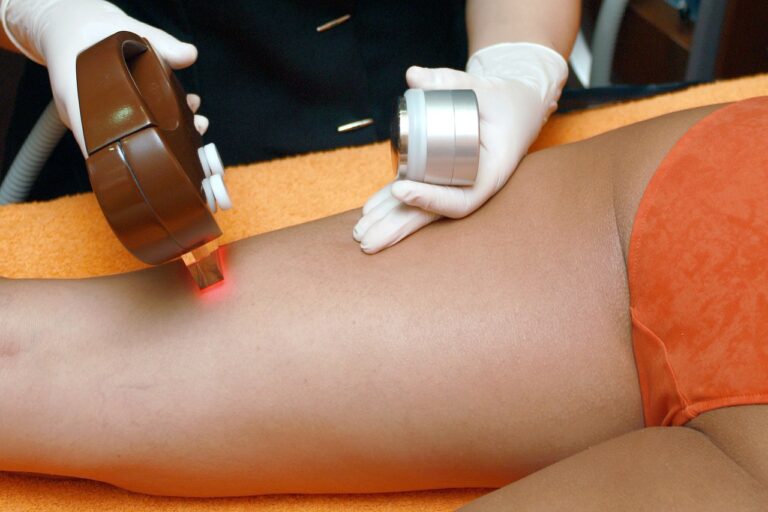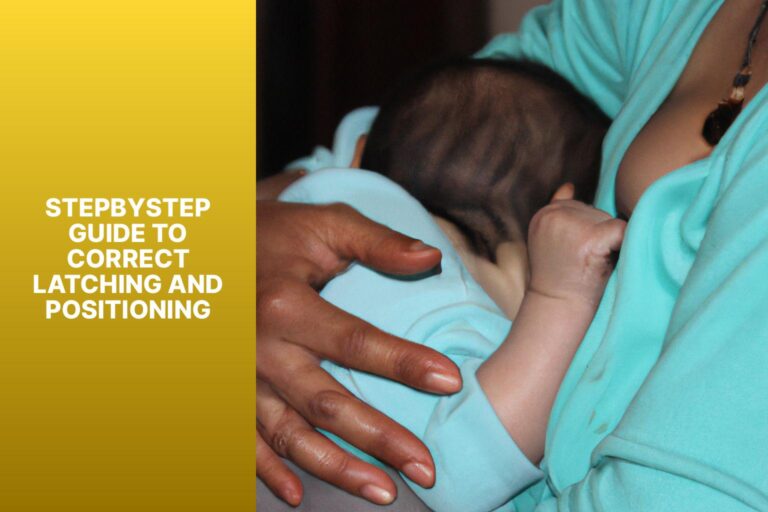Deep Latch vs. Shallow Latch: Understanding the Difference
“
Breastfeeding is a natural and vital process for nourishing a newborn baby. One of the key factors that contributes to successful breastfeeding is the latch, which refers to how the baby attaches to the mother’s breast. Understanding the difference between a deep latch and a shallow latch is crucial for both the mother and the baby’s comfort and well-being during breastfeeding.
A deep latch occurs when the baby’s mouth covers a large portion of the areola, ensuring that the nipple reaches the back of the baby’s mouth. This allows for effective milk transfer and stimulates the baby’s sucking reflex. Deep latch offers several benefits for the baby, including optimal milk intake, efficient feeding, reduced gas and colic, and a decreased risk of nipple and breast pain for the mother. To achieve a deep latch, it is important to ensure proper positioning and attachment during breastfeeding.
On the other hand, a shallow latch occurs when the baby is not able to grasp enough of the areola and instead mainly latches onto the nipple itself. This can result in breastfeeding challenges, such as insufficient milk transfer, poor weight gain in the baby, and sore nipples for the mother. Correcting a shallow latch involves repositioning the baby and making adjustments to ensure a deeper latch.
Understanding the difference between a deep latch and a shallow latch is essential to address any issues that may arise during breastfeeding. By identifying the key differences and recognizing the signs of a deep or shallow latch, mothers can work towards improving their baby’s latch and addressing common issues such as sore nipples, low milk supply, and poor weight gain in babies. Seeking professional help from a lactation consultant or breastfeeding specialist can provide valuable guidance and support. there are various tips and techniques that can be implemented to ensure a successful latch. With the right knowledge and support, mothers can establish a positive breastfeeding experience for both themselves and their babies.
“
1. A deep latch in breastfeeding is crucial for the baby’s successful feeding and comfort.
2. A deep latch provides benefits for the baby, including proper milk transfer and reduced risk of nipple pain.
3. Achieving a deep latch involves correct positioning and attachment techniques.
4. A shallow latch can present challenges such as poor milk transfer and nipple discomfort.
5. Understanding the key differences between deep latch and shallow latch is essential for improving breastfeeding.
6. Identifying whether a baby has a deep or shallow latch can be done by observing the latch position and feeling any discomfort or pain.
7. Common issues related to latch include sore nipples, low milk supply, and poor weight gain in babies.
8. Improving latch and addressing issues can be achieved through seeking professional help and implementing tips and techniques for a successful latch.
What is Breastfeeding Latch?
Breastfeeding latch refers to the way a baby attaches to the mother’s breast during breastfeeding. It is a critical aspect of successful breastfeeding and can significantly impact the baby’s ability to effectively extract milk and the mother’s comfort during feeding. The latch technique involves how the baby positions their mouth and attaches to the breast for nursing.
A proper breastfeeding latch involves:
- Mouth Position: The baby’s mouth should be wide open, with their lips flanged outwards like a fish. This allows them to take in a good amount of the areola along with the nipple.
- Areola Inclusion: The baby’s mouth should cover not just the nipple but also a significant portion of the areola (the darker area surrounding the nipple). A deep latch ensures that the baby gets enough milk and stimulates milk production.
- Tongue Placement: The baby’s tongue should be positioned under the breast, with the tip resting on the lower gum. This helps create a seal and allows the baby to compress the milk ducts effectively.
- No Pain or Discomfort: A proper breastfeeding latch should not cause pain or discomfort for the mother. If there is any pain or nipple damage, it may indicate an incorrect latch that needs to be corrected.
An improper latch, such as a shallow latch, can lead to several breastfeeding challenges, including inadequate milk transfer, poor weight gain, nipple soreness, and reduced milk supply. It is important for both the mother and baby to learn and practice a deep latch technique to ensure successful breastfeeding.
The Importance of a Good Latch
A good latch is crucial for successful breastfeeding and the health of both the baby and the mother. Here are a few reasons why a good latch is important:
- Effective Milk Transfer: A proper latch ensures that the baby can effectively remove milk from the breast. This allows the baby to receive an adequate amount of milk, promoting healthy growth and development.
- Prevention of Nipple Damage: With a good latch, the baby’s mouth covers a large portion of the areola, not just the nipple. This helps distribute the sucking pressure evenly and prevents nipple soreness, cracking, or pain.
- Stimulates Milk Production: A baby with a good latch is able to effectively stimulate milk production. The baby’s strong latch and sucking action signal the body to produce more milk, establishing a healthy milk supply.
- Comfortable Feeding Experience: When the baby has a deep latch, feeding is more comfortable for both the baby and the mother. The baby can efficiently extract milk, and the mother is less likely to experience nipple pain or discomfort.
- Promotes Bonding: A good latch promotes a close and intimate bond between the baby and the mother during breastfeeding. It allows for skin-to-skin contact and interaction, enhancing the emotional connection between them.
- Prevents Frustration: A shallow latch can result in ineffective milk transfer, leading to the baby becoming frustrated and unsatisfied. A deep latch ensures that the baby gets enough milk, reducing frustration and promoting a positive feeding experience.
- Encourages Prolonged Breastfeeding: A good latch increases the likelihood of successful breastfeeding for an extended period. When the baby is able to breastfeed comfortably, both the mother and baby are more likely to continue breastfeeding for as long as desired.
Understanding the importance of a good latch and seeking support from a lactation consultant or healthcare professional can significantly contribute to a successful breastfeeding journey.
What is a Deep Latch?
A deep latch refers to the breastfeeding technique where a baby attaches to the breast correctly, ensuring effective milk transfer and optimal breastfeeding experience. It involves the following key elements:
- Mouth Position: In a deep latch, the baby’s mouth covers a large portion of the areola (the dark area around the nipple) rather than just the nipple itself. This helps the baby access the milk ducts and stimulates the milk flow.
- Lip Flanging: The baby’s lips should be flanged outward, like fish lips, to create a tight seal around the breast. This prevents air intake and ensures a proper suction for milk extraction.
- Tongue Position: The baby’s tongue should be positioned under the breast and extend over the lower gumline. This allows the tongue to compress the milk ducts and draw milk effectively.
- Jaw Movement: During a deep latch, the baby’s jaw moves rhythmically, creating a wave-like motion along the breast. This motion stimulates the milk ejection reflex and promotes efficient milk transfer.
- Comfortable Feeding: A deep latch should be comfortable for both the baby and the breastfeeding parent. It reduces the likelihood of nipple pain, damage, and engorgement.
Achieving and maintaining a deep latch is important for successful breastfeeding. It helps ensure that the baby receives enough milk, promotes healthy weight gain, and establishes a good milk supply. If experiencing difficulties with latch, seeking support from a lactation consultant or healthcare professional can be beneficial.
What are the Benefits of Deep Latch for the Baby?
- What are the Benefits of Deep Latch for the Baby? A deep latch promotes effective milk transfer. When a baby has a deep latch, it ensures proper alignment between their mouth and the breast, allowing them to effectively draw milk from the breast.
- A deep latch reduces nipple soreness and pain. By latching deeply onto the breast, the baby is able to properly engage the nipple and areola, reducing the risk of nipple damage and soreness for the breastfeeding parent.
- A deep latch stimulates milk production. The baby’s effective latch stimulates the milk glands in the breast, signaling the body to produce more milk. This helps maintain a healthy milk supply for the baby.
- A deep latch supports optimal growth and weight gain. Babies who have a deep latch are able to effectively extract the milk they need, which helps them gain weight and grow at a healthy rate.
- A deep latch enhances the baby’s overall breastfeeding experience. When the latch is deep and secure, the baby feels comfortable and satisfied during breastfeeding. This promotes a positive breastfeeding relationship between the baby and the breastfeeding parent.
How to Achieve a Deep Latch?
To achieve a deep latch while breastfeeding, follow these steps:
- Position yourself comfortably: Sit in a chair with good back support or use pillows to support your back. Make sure your feet are flat on the floor or use a footstool to elevate them. Bring your baby close to your body.
- Support your baby: Use your forearm to support your baby’s neck, shoulders, and upper back. Make sure your hand supports their bottom and keep their body facing towards you.
- Align your baby’s nose with your nipple: Gently bring your baby’s mouth to your breast. Make sure their nose is aligned with your nipple, allowing them to tilt their head back slightly.
- Wait for a wide open mouth: Stroke your baby’s cheek or gently touch their lips with your nipple to encourage them to open wide. This ensures a deeper latch.
- Support your breast: Use your free hand to shape your breast into a C or U shape to help your baby latch on properly.
- Bring baby onto the breast: Bring your baby’s mouth to your breast, aiming for a deep latch. Their mouth should cover not just the nipple but also a significant portion of the areola.
- Listen for swallowing: Once your baby latches on, listen for a rhythmic pattern of swallowing. This indicates that they are properly latched and feeding well.
Pro-tip: If you’re having trouble achieving a deep latch, seek assistance from a lactation consultant or a healthcare provider who specializes in breastfeeding. They can provide personalized guidance and support to help you and your baby establish a successful breastfeeding relationship.
What is a Shallow Latch?
A shallow latch refers to a breastfeeding technique where the baby does not take enough of the breast into their mouth during feeding. In a shallow latch, the baby primarily latches onto the nipple rather than taking in a significant portion of the areola.
Characteristics of a shallow latch:
- The baby’s mouth is not fully open during latching.
- The baby’s lips may be curled inward instead of flanged outward.
- The nipple is primarily in the baby’s mouth, while the areola is not adequately drawn in.
- The feeding may be uncomfortable or painful for the breastfeeding parent due to the nipple bearing most of the baby’s suction.
- The baby may not receive enough milk, leading to insufficient feeding and potential issues with weight gain.
- A shallow latch can contribute to sore nipples, nipple damage, and an inadequate milk supply.
It is important to address a shallow latch to ensure effective breastfeeding and a comfortable feeding experience for both the baby and the breastfeeding parent. Seeking guidance from a lactation consultant or healthcare professional can provide valuable support in correcting a shallow latch and promoting successful breastfeeding.
What are the Challenges of a Shallow Latch?
When faced with a shallow latch while breastfeeding, there are several challenges that both the mother and baby may encounter. The baby might struggle to effectively extract milk from the breast, leading to insufficient milk intake. This can result in inadequate weight gain for the baby, which can be a cause for concern. Furthermore, a shallow latch can bring discomfort and soreness for the mother, as the baby’s latch may not be secure and may exert increased pressure on the nipples. As a consequence, cracked or bleeding nipples may occur, making breastfeeding a painful ordeal.
In addition, a shallow latch can also impact milk supply. When the baby is not deeply latched, they may not adequately stimulate the breast, resulting in reduced milk production. This can lead to low milk supply, posing a challenge in meeting the baby’s nutritional requirements.
To address the difficulties associated with a shallow latch, it is crucial to correct the latch technique. Seeking assistance from a lactation consultant or breastfeeding support group can offer guidance on proper latch techniques and positioning. Additionally, experimenting with different breastfeeding positions may prove beneficial in finding the optimal one for both the mother and baby. Ensuring a deep latch can enhance milk transfer, alleviate nipple soreness, promote appropriate milk supply, and support the overall well-being of the baby.
How to Correct a Shallow Latch?
- How to Correct a Shallow Latch? To correct a shallow latch, follow these steps:
- Ensure a comfortable positioning: Sit in a relaxed position with good back support. Use pillows to support your arms and the baby.
- Hold your breast: Gently hold your breast with your hand, with your fingers well away from the areola.
- Tickle baby’s lower lip: Use your nipple to tickle the baby’s lower lip, encouraging them to open their mouth wide.
- Bring baby to the breast: Bring the baby towards your breast, aiming their bottom lip to make contact with the base of the areola.
- Wait for a wide latch: Allow the baby to latch on when their mouth is wide open, ensuring a deep latch.
- Check for a good seal: Make sure the baby’s lips are flanged out, forming a seal around the areola.
- Adjust if needed: If the latch is still shallow, gently break the suction by inserting a pinky finger into the side of the baby’s mouth and reposition the latch.
- Listen for swallowing: Once the baby is latched on correctly, listen for audible swallows, indicating they are effectively breastfeeding.
By following these steps, you can correct a shallow latch and ensure a comfortable and effective breastfeeding experience for both you and your baby.
Understanding the Difference between Deep Latch and Shallow Latch
The difference between a deep latch and a shallow latch when breastfeeding is as follows:
Deep Latch:
- A deep latch involves the baby taking a large portion of the areola (the darker area around the nipple) into their mouth along with the nipple.
- The baby’s mouth is wide open, and their lips are flanged outward.
- The baby’s tongue extends over the lower gum and creates a seal with the breast.
- A deep latch allows the baby to effectively extract milk from the breast and stimulates milk production.
- A deep latch minimizes nipple soreness and promotes comfortable breastfeeding.
Shallow Latch:
- A shallow latch involves the baby latching onto the nipple itself, rather than taking in a significant portion of the areola.
- The baby’s mouth may not be fully open, and their lips may not be turned out.
- The baby may be sucking primarily on the nipple, which can lead to nipple pain and damage.
- A shallow latch may result in ineffective milk transfer, poor weight gain for the baby, and insufficient stimulation for milk production.
- It is important to correct a shallow latch to ensure successful breastfeeding and prevent discomfort or complications.
Understanding the difference between a deep latch and a shallow latch is crucial for breastfeeding mothers to ensure proper milk transfer, minimize discomfort, and promote a successful breastfeeding journey for both mother and baby.
What are the Key Differences?
The key differences between a deep latch and a shallow latch can be summarized in the following table:
| Deep Latch | Shallow Latch |
| When the baby’s mouth covers a large portion of the areola | When the baby only latches onto the nipple |
| Allows for efficient milk transfer | May lead to ineffective milk transfer |
| Reduces the risk of sore nipples | May cause sore nipples |
| Ensures the baby gets enough milk to promote healthy weight gain | May result in poor weight gain in babies |
| Provides a comfortable latch for both the mother and the baby | May cause discomfort and frustration for both |
It is essential to ensure that the baby achieves a deep latch to facilitate proper breastfeeding. To identify whether a baby has a deep or shallow latch, observe if the baby’s mouth covers a significant portion of the areola or only grasps the nipple. If the latch is shallow, it is crucial to correct it to avoid potential issues such as sore nipples, low milk supply, and poor weight gain.
To improve the latch, seek professional help from a lactation consultant or breastfeeding support group. They can provide individualized guidance and support. There are various tips and techniques that can be employed, such as ensuring a comfortable position for both the mother and baby, aiming the nipple towards the baby’s nose, and encouraging a wide mouth latch.
By understanding the key differences between a deep latch and a shallow latch and taking appropriate steps to achieve a proper latch, both mothers and babies can experience a successful and comfortable breastfeeding journey.
What are the Key Differences?
How to Identify if Baby has a Deep or Shallow Latch?
- How to Identify if Baby has a Deep or Shallow Latch? Observe the baby’s mouth position: A baby with a deep latch will have their mouth wide open, with their lips covering a large portion of the breast.
- How to Identify if Baby has a Deep or Shallow Latch? Check for a wide nipple in the baby’s mouth: A deep latch will have the nipple positioned towards the back of the baby’s mouth, with more of the areola visible.
- How to Identify if Baby has a Deep or Shallow Latch? Listen for swallowing sounds: If the baby has a deep latch, you may hear regular swallowing sounds as they effectively extract milk from the breast.
- How to Identify if Baby has a Deep or Shallow Latch? Monitor the baby’s comfort and feeding pattern: A baby with a deep latch will generally be more content during and after feeding sessions.
- How to Identify if Baby has a Deep or Shallow Latch? Check for any signs of nipple damage: A deep latch minimizes the risk of sore nipples or discomfort for the breastfeeding parent.
- How to Identify if Baby has a Deep or Shallow Latch? Observe the baby’s weight gain: If the baby is consistently gaining weight and meeting their growth milestones, it is an indication of a good latch.
- How to Identify if Baby has a Deep or Shallow Latch? Seek professional guidance: If you are unsure about the latch or experiencing any difficulties, it is advisable to consult a lactation consultant or healthcare provider for an expert assessment.
Common Issues Related to Latch
From sore nipples to low milk supply and poor weight gain in babies, this section dives into the common issues related to latch, providing valuable insights and practical solutions. Say goodbye to discomfort and frustration as we unravel the challenges that breastfeeding mothers often face. Let’s explore these hurdles together and discover how to overcome them for a smoother and more enjoyable breastfeeding journey.
Sore Nipples
Experiencing sore nipples is a common issue that many breastfeeding mothers face. It’s essential to tackle this concern to ensure a comfortable and successful breastfeeding journey. Here are some important factors to consider:
- Improper latch: One possible cause of sore nipples is a shallow latch, where the baby doesn’t take enough breast tissue into their mouth. Achieving a deep latch is crucial to preventing nipple pain.
- Engorgement: When the breasts are overly full or engorged, it can pose difficulties for the baby to latch correctly, resulting in sore nipples. Ensuring the right frequency of breastfeeding and relieving engorgement can be helpful.
- Incorrect positioning: If the baby isn’t positioned properly during breastfeeding, excessive pressure may be exerted on the nipples, leading to soreness. It’s important to ensure the baby is comfortably positioned to alleviate this issue.
- Tongue or lip tie: In certain cases, a baby may have a tongue or lip tie, which can hinder their ability to latch correctly and cause nipple discomfort. Consulting a lactation consultant or healthcare provider can assist in identifying and addressing this issue.
- Poor latch technique: It is crucial to ensure that the baby’s mouth is wide open and properly latched onto the breast. This promotes effective milk transfer and helps prevent nipple pain.
By addressing these factors and seeking assistance from a healthcare professional or lactation consultant, it is possible to prevent and alleviate sore nipples during breastfeeding.
Low Milk Supply
When it comes to breastfeeding, low milk supply is a common concern for many mothers. It is important to understand this issue and know how to address it effectively.
1. Breastfeeding mothers may experience low milk supply, which means their breasts do not produce enough milk to meet the baby’s needs.
2. This can be caused by various factors such as hormonal imbalances, ineffective breastfeeding techniques, or certain medical conditions.
3. To address the issue of low milk supply, it is essential to ensure proper latch during breastfeeding. A good latch helps the baby effectively remove milk from the breast, stimulating milk production.
4. Mothers can work on improving their latch technique by seeking professional help from lactation consultants or attending breastfeeding support groups.
5. It is also crucial to nurse frequently and on-demand, as frequent breastfeeding helps stimulate milk production.
6. Adequate hydration and nutrition are vital for maintaining milk supply. Mothers should drink enough fluids and consume a well-balanced diet.
7. Some breastfeeding mothers find certain herbs or supplements helpful in boosting milk supply. It is important to consult with a healthcare professional before trying any supplements.
8. In severe cases of low milk supply, healthcare providers may recommend additional interventions such as pumping, using a supplemental nursing system, or prescribing medication.
By understanding the causes and taking appropriate steps to address low milk supply, breastfeeding mothers can support their baby’s nutritional needs and continue their breastfeeding journey successfully.
Poor Weight Gain in Babies
Poor weight gain in babies is a serious concern that can indicate potential health issues. Here are some factors to consider:
- Breastfeeding difficulties: Poor latch during breastfeeding can lead to inadequate milk transfer, resulting in insufficient calorie intake and poor weight gain in babies.
- Low milk supply: Insufficient milk production can contribute to poor weight gain. Factors such as hormonal imbalances, ineffective breastfeeding techniques, or certain medications can impact milk supply.
- Medical conditions: Some medical conditions, such as tongue-tie or cleft palate, can affect a baby’s ability to effectively breastfeed, leading to poor weight gain.
- High energy expenditure: Certain medical conditions or metabolic disorders can increase a baby’s energy needs, making it harder for them to gain weight.
It is important to consult with a healthcare professional, such as a lactation consultant or pediatrician, if you notice poor weight gain in your baby. They can evaluate the situation and provide guidance and support. Together, you can address any underlying issues, improve breastfeeding techniques, and explore appropriate feeding alternatives if necessary. Remember, early intervention is key to ensuring your baby’s healthy growth and development.
How to Improve Latch and Address Issues
“Looking to improve your latch and troubleshoot any issues? In this section, we’ll dive into practical ways to enhance your latch experience. From seeking professional help to discovering helpful tips and techniques, we’ve got you covered. Say goodbye to breastfeeding woes and hello to a successful latch. Let’s get started on this journey towards better feeding!”
Seeking Professional Help
Seeking professional help can significantly benefit breastfeeding mothers who are encountering challenges with latch issues. Lactation consultants and breastfeeding specialists are highly trained professionals who can offer expert guidance and support in overcoming these difficulties. These professionals possess extensive knowledge and experience in assessing latch problems and can provide tailored solutions.
By reaching out for professional help, mothers can receive personalized advice on techniques to enhance latch, such as adjusting positioning, ensuring a deep latch, and addressing any underlying issues that may impact the latch. These experts can also provide emotional support and reassurance, which can effectively alleviate the stress and frustration that often accompany latch problems.
It is essential for mothers to understand that seeking professional help does not indicate any deficiency on their part. Breastfeeding is a skill that both mother and baby need to learn, and seeking information and guidance from experts can facilitate this learning process.
Pro-tip: Do not hesitate to seek assistance from a lactation consultant or breastfeeding specialist if you are experiencing latch difficulties. They can offer valuable guidance and support to ensure a successful breastfeeding journey for both you and your baby.
Tips and Techniques for a Successful Latch
Follow these tips and techniques for a successful latch while breastfeeding:
- Ensure a comfortable and relaxed position for both you and your baby.
- Support your breast with one hand, placing your thumb above the areola and fingers below.
- Wait for your baby to open their mouth wide with their tongue down and bring them close to your breast.
- Guide your baby’s mouth to latch onto the areola, not just the nipple.
- Make sure their lips are flanged outwards, forming a seal around the breast.
- Listen for a rhythmic sucking and swallowing pattern to ensure proper milk transfer.
- If there is any discomfort or pain, gently break the latch by inserting your finger into the corner of their mouth and try again.
- Allow your baby to nurse as long as they want, switching breasts if needed.
- Check for signs of hunger, such as rooting or sucking on hands, and offer the breast proactively to prevent fussiness.
- Stay hydrated and maintain a healthy diet to support milk production.
By incorporating these tips and techniques, you can achieve a successful latch and establish a comfortable and effective breastfeeding routine.
Frequently Asked Questions
What is the difference between a deep latch and a shallow latch during breastfeeding?
A deep latch occurs when the baby takes a large mouthful of breast tissue, including the majority of the areola, into their mouth during breastfeeding. This allows for effective milk transfer and minimizes discomfort for both the mother and baby. On the other hand, a shallow latch happens when the baby only latches onto the nipple or a small amount of areola. This can lead to latching difficulties, nipple pain, and inadequate milk supply.
What are the signs of a shallow latch?
There are several signs that indicate a shallow latch during breastfeeding. These include how the nipple enters the baby’s mouth (not deeply enough), the position of the baby’s bottom lip (not turned out or flared), and the presence of pain during latching. The latch may also result in a flattened nipple, pinching sensation, or clicking noises during feeding.
How can I achieve a deeper latch during breastfeeding?
To achieve a deeper latch, it is essential to ensure proper positioning of the baby. You can try feeding in a laid-back nursing or rugby hold position, with the baby’s body aligned and their head free to tilt back. Position their nose in line with the nipple and wait for them to open their mouth wide before guiding them to latch. It is crucial for the baby to take a large mouthful of breast tissue, not just the nipple.
When should I seek help from an IBCLC lactation consultant for latching difficulties?
If a shallow latch persists or causes nipple pain, damage, or a decreased milk supply, it is recommended to seek support from an IBCLC lactation consultant. They are trained professionals who can provide guidance, assess and address any breastfeeding challenges, and offer personalized advice and techniques to improve latching and breastfeeding experience.
What is the exaggerated latch or flipple technique?
The exaggerated latch or flipple technique can be helpful in achieving a deeper latch. It involves shaping the breast so the nipple points up against the baby’s nose, waiting for them to open wide, and guiding them to latch while flipping the nipple down into their mouth. During this technique, the baby’s face may be deeper into the breast tissue. It can be particularly useful in cases where a shallow latch persists or causes pain or damage.
Are there any online resources or courses available for breastfeeding mothers experiencing latching difficulties?
Yes, there are various online courses and resources available for nursing mothers who are experiencing latching difficulties. You can join mailing lists of reputable websites to receive updates on blog posts, webinars, and other helpful information related to breastfeeding and the newborn period. Additionally, some platforms offer online courses specifically designed to address latching challenges and provide problem-solving strategies.









